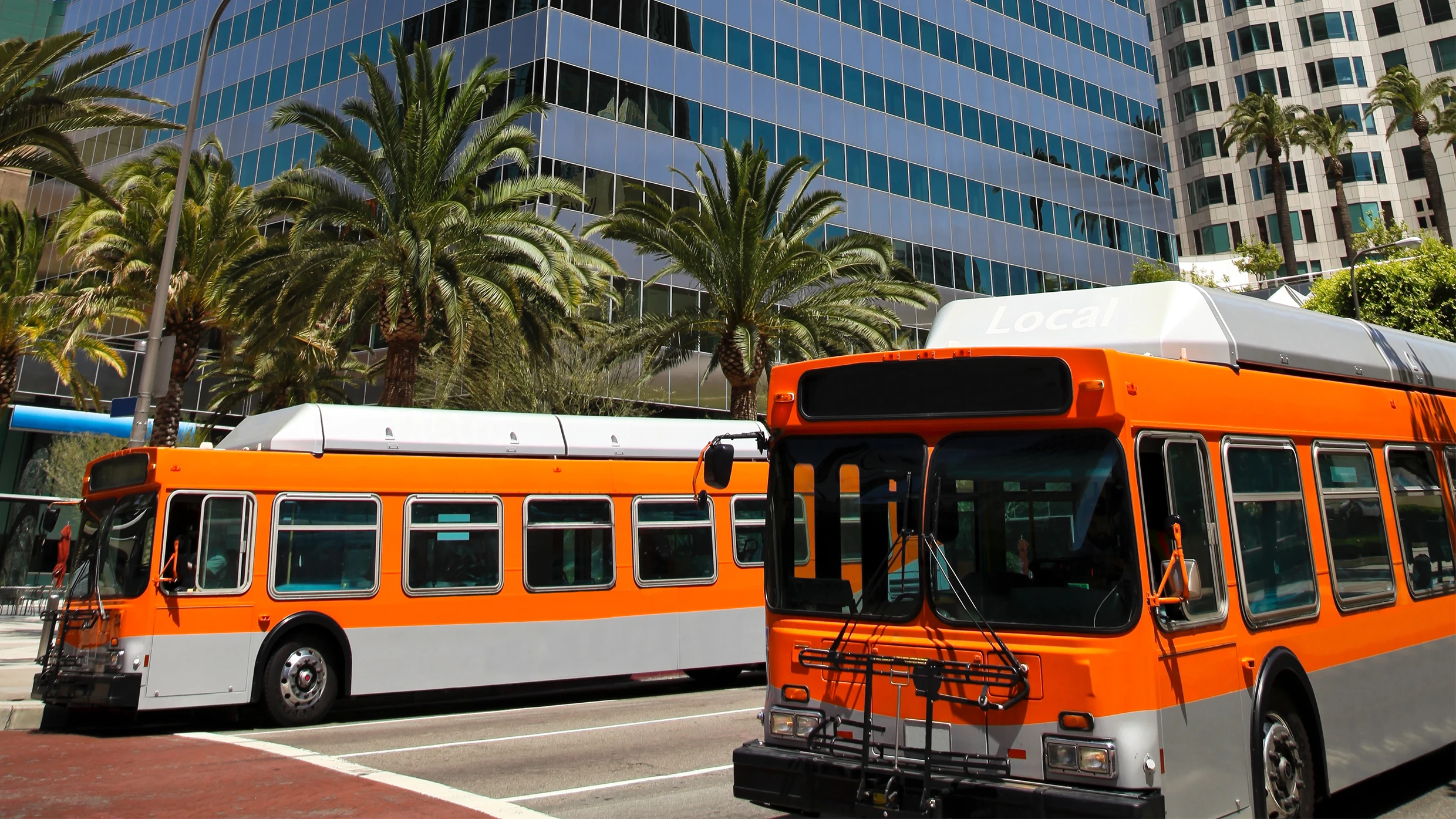Los Angeles has a reputation as a car-dependent city. But the city (and the surrounding county) also now has the country’s most ambitious plan for cutting emissions from transportation. In less than a decade, it wants the majority of new cars to be electric and all city buses to be electric—and it wants 20% of trips that currently happen in single-occupancy cars to shift to public transportation or active transportation like biking.
Today, a set of partners released the Zero Emissions 2028 Roadmap 2.0, a plan that outlines how the region can drastically cut transit emissions by 2028 to address both climate change and the health impacts of smog. Convincing Angelenos to drive less is a key part of the plan.
“In the modeling, we looked extensively at different scenarios for the number of electric cars and zero-emission trucks that would need to be on the road, and chargers to serve those vehicles,” says Matt Petersen, president and CEO of the Los Angeles Cleantech Incubator, which convened a group of partners last year to set initial targets, now spelled out in more detail. “And we recognize that one of the key ways we’re going to achieve the reduction goal for greenhouse gas emissions and air pollution is mode shift: How do we get people out of their cars into public transit or active transit?”

If they do drive, the city wants them using electric vehicles. To help make the shift easier, the city, county, and other partners plan to blanket the area in 84,000 public and workplace charging stations and add chargers where they’re particularly critical, like at apartment buildings. It will also use incentives to help consumers, especially low-income drivers, afford electric cars. By 2028, 30% of cars on the road will be electric, and 80% of new cars sold will be electric. Larger trucks will also move to electric power, a major road from the port will become the first “zero-emissions goods movement corridor” in the country, and the city will test zero-emissions delivery zones for packages. But to stay on track to cut emissions, the biggest change the city will have to manage is making it easier not to drive at all.
Part of that means improving public transportation, both in the routes that are available and the quality of the experience. The shift to electric buses—which are quieter than rattling diesel or natural gas buses, and often come with amenities such as Wi-Fi and charging—can help. “Those are the kinds of things that are going to make discretionary riders more interested and eager and willing to get out of their cars,” says Petersen.
Expanding micromobility can also help; a recent report in Santa Monica found that 49% of the trips that people were taking on electric scooters and shared bikes were replacing short trips that otherwise would have happened in cars. Some projects now are working to expand access to micromobility in neighborhoods that don’t have many options. Los Angeles Cleantech Incubator, for example, is running a pilot with a nonprofit building a solar-powered e-bike share project in the community of Huntington Park. (Other pilot projects are expanding access to electric car sharing in low-income neighborhoods; if residents use that option instead of owning cars themselves, they also may be likely to drive less.) Designing streets to make it safer to ride a bike—such as a two-way protected bike lane that was installed in downtown L.A. earlier this year—is also a key part of helping people shift away from cars.
The Los Angeles County Metropolitan Transportation Authority also now plans to study the idea of congestion pricing, the type of road fee that London uses to reduce traffic in the city center. (If it happens, it may come with an incentive like free bus service.) In 2017, Los Angeles Mayor Eric Garcetti signed the Fossil Fuel Free Streets Declaration, a pledge to “envision a future where walking, cycling, and shared transport are how the majority of citizens move around our cities” and to create a major emissions-free zone.
All of this is happening in the wake of the Trump administration’s formal withdrawal from the Paris climate agreement and as the state of California, and some automakers, fight the federal government for the state’s right to set its own clean car rules. It’s the type of action that’s necessary for the U.S. to have any chance of meeting the goals of the Paris agreement.
“This is an unprecedented public-private partnership…setting the most ambitious such zero-emission targets in the nation,” Petersen says. “And we can’t do it alone. We need everybody to join in, from industry to other cities to automakers to the public.”
Correction: We’ve updated this article to reflect that this plan is county-wide, not just for the city of Los Angeles.
Recognize your company's culture of innovation by applying to this year's Best Workplaces for Innovators Awards before the extended deadline, April 12.
